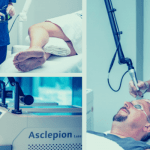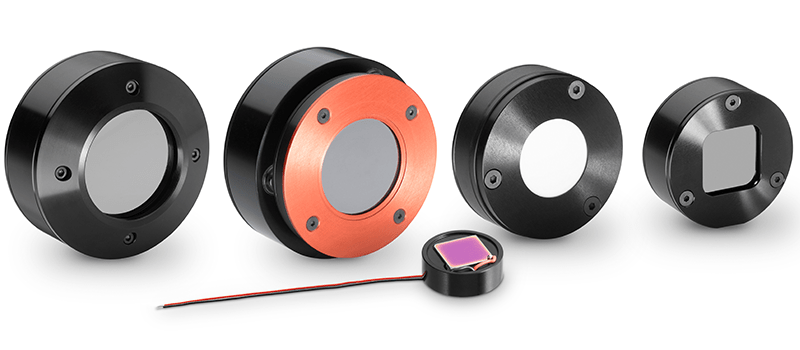When you think of electromagnetic radiation, what pops into your head? X-Rays? Radio waves? Microwaves? Or maybe just plain old light.
What most people don’t think about – or hadn’t until recently – is the small gap in between microwaves and infrared light waves. This gap is called Terahertz, as it represents waves with a frequency of about 0.3 to 10 THz. In the last few years, there has been significant advancement in THz sources and imagers, leading to a lot of talk about T-Rays replacing X-Rays.
What’s so great about Terahertz?
X-Rays have always come with the danger of ionization of the atoms in our body. Since X-Rays have a wavelength that ranges from about 0.01 nm to 10 nm, this is a real concern 1. (A typical atom has a radius of ~0.1 nm.) Since T-Ray wavelengths range from about 50 microns to 1 mm, this danger disappears. Terahertz waves are simply too long to get into the nitty-gritty of individual atoms.
A simplified electromagnetic spectrum divided up into segments (top), from left: Gamma rays, X-Rays, UV, visible light, IR, microwaves, and radio waves. The bottom zooms in on the THz region, placing it at the far end of the IR band. Author: Tatoute
This fundamental wavelength difference also means that T-Rays won’t work the same way that X-Rays do. In imaging, it all comes down to what materials absorb the light and what lets it pass through. X-Rays can pass pretty much unhindered through clothes, skin, tissue and muscle, right down to the bone. This is obviously helpful when trying to diagnose broken bones and similar medical issues, but not so much when trying to look at a cellular issue, such as cancer. In those cases, doctors need another method.
T-Rays may be the perfect solution. They pass straight through clothes, but they are absorbed well by water, which we have an abundance of inside our bodies. Furthermore, Terahertz light is absorbed differently by different molecules and actually can be used to throw cancerous cells into sharp contrast for much easier detection then is available today.
Terahertz waves are also being developed (and in some cases have already been employed) in security systems. Although the application is different and some requirements change from medical to security, the main idea is the same. We need a method for seeing something hidden from sight, and we’d prefer something that doesn’t need a warning label that says: “Careful – this radiation might scramble the atomic makeup of your DNA.”
A third industry that is excited to try out Terahertz imaging is pharmaceuticals. Terahertz radiation can be used for spectroscopy (detecting the chemical makeup of an object based on the wavelengths of light it reflects). Although spectroscopy is not unique to Terahertz, combining it with the ability of a T-Ray to “see through” certain materials makes it the perfect solution to check pills for defects. A Terahertz spectrometer can image the contents of the pill on the production line right through the package.
Universities and labs around the world are working on making Terahertz radiation a more practical solution. This means creating a reasonably high power source, but in a small or portable package that doesn’t need a massive amount of cooling. In order to do this research, the labs must have precision measurement equipment. (And users of T-Rays will also need to measure them to some extent, depending on the level of precision required by their application.)
How do you measure a T-Ray?
https://www.youtube.com/watch?v=0B3vqwcsGYA
Basically, the same way you measure a regular laser – with a laser power meter and sensor.

However, the challenge of accurately measuring a Terahertz laser is not a trivial one. Although, Ophir for example, has a sensor coating that absorbs Terahertz frequencies, its exact absorption percentage is not known. This kills the accuracy. Just to get specific for a moment, most Ophir thermal sensors are accurate to within ±3%, whereas our Terahertz thermal sensor (3A-P-THz) was until recently only guaranteed to display your laser power with ±15% accuracy due to the poor accuracy of the standards that it could be compared to .
However, all this has now changed due to some groundbreaking work that PTB has done. They actually reconfigured an Ophir Terahertz sensor in such a way that they could account for all the laser power, even what wasn’t absorbed in the coating of the sensor.

In a word, they used an absorber with specular reflectance so they could measure both the absorbed and reflected radiation. That way, they could calculate exactly how much was absorbed.
The bottom line is that PTB now has a standard Terahertz sensor that can measure between 1 and 5 THz with a 2 sigma uncertainty of less than 3%. The upshot here at Ophir is that we can now calibrate our THz sensors to far better accuracy than we’ve been able to until now and can now guarantee 2 sigma accuracy of 8%.
.
- Although I should note that this danger is generally minimal for regular x-rays since one receives the same dose of radiation from natural source over the course of a couple of days. However, CT scans may provide a more imminent danger, as one CT scan could be equivalent to a few years’ worth of radiation. ↩︎













Leave a Reply
Your email address will not be published. Required fields are marked *